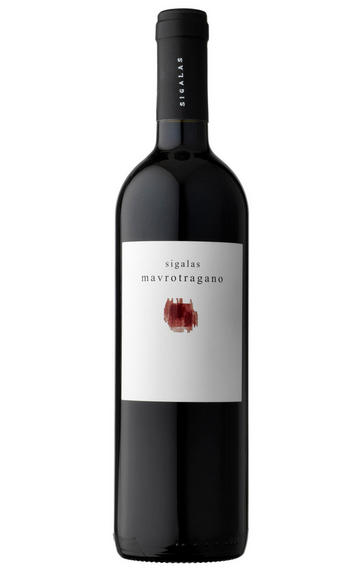
About this WINE
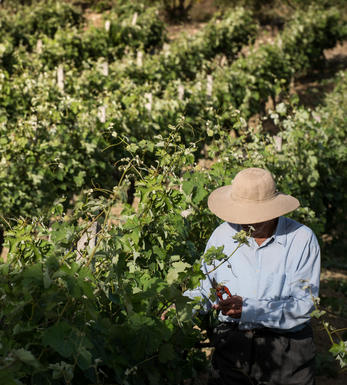
Domaine Sigalas
The long winemaking tradition of Santorini island coupled with modern practices and state-of-the-art technology are the founding principles of Domaine Sigalas, one of the most highly-appreciated Santorini wineries.
The vineyards are situated at the fields of Oia village, at the northern part of the island. Mild winters, cool summers and the island's volcanic soil create a unique ecosystem, favouring the production of high quality wines, of distinct character. The most versatile grape variety of the Mediterranean region, the Assirtiko (or Assyrtiko) of Santorini, as well as other indigenous varieties - Aidani, Athiri, Mandilaria, Mavrotragano - are cultivated, giving superior quality wines, which have gained many international distinctions..
Sigalas farms its Mavrotragano at a density of 6,000 vines per hectare, trellised and with an average age of just 7 years. Irrigation on this arid island is permitted, administered post-veraison, with the bunches limited to four per vine. Average yields are in the region of just 20 – 25 hectolitres per hectare. As for vinification, Sigalas avoid the use of pumps at all phases, favouring a more protective approach. Cold maceration last for approximately one week and the resulting fermentation takes place in used French oak barrels. In achieving physiological (phenolic) ripeness Mavrotragano builds sugars and, as a result, may reach as much as 15% alcohol by volume. This grape has an affinity for new oak, in which it matures (an element of which are new barrels) for some 18 months.
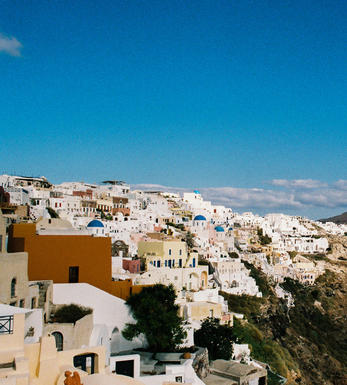
Santorini
The volcanic island of Santorini is one of the southernmost in the Cyclades archipelago and among the most famous in Greece. Growing vines has been a long-standing activity and it has successfully survived the competition for hotel-land as well as the extreme viticultural conditions (volcanic eruptions, severe summer drought, hot weather, dry, ferocious winds)
In this unforgiving viticultural environment, vines are pushed to their limits, struggling to produce even 2 tonnes per hectare. This also results to an extraordinary definition of flavours in the fruit.
Asyrtiko, the standout Greek white grape, planted throughout Greece including Macedonia and Attica, is at home here with a magnificent combination of body, steely minerality and high acidity. It works extremely well in its own, but it also lends itself to blends with the more mellow and fruity Athiri and Aidani grapes.
Assirtiko wines are bone-dry, showing citrus aromas intermixed with an earthy, mineral aftertaste that reflects the volcanic soil of Santorini.
Vinsanto or Vissanto
Vissanto, produced since Byzantine times, is a local sweet wine speciality, made from sun-dried Assyrtiko, Aidani and Athiri grapes. Mature examples are half-way between Oloroso and Tawny Port. Less sweet, more youthful versions from a combination of raisined and and un-raisined grapes, or from grapes that have undergone less sun drying, show peach flavors and a lingering aftertaste of wildflower honey, supported by mouthwatering acidity.
Although the island didn't have a reputation for red wine, the red cultivars of Mandilaria (20% of vineyard area) and the oak-aged Mavrotragano (of the Mataro-Mourvedre lineage) have now gained recognition in the Greek wine-making scene.
A rare examples of sweet wine (Madeira-style) from sun-dried grapes is also produced by the local Mavrathiro.
Recommended Producers
Santorini is home to several pioneering boutique wineries. Certain of these have propelled the local industry to achieving modernization, innovation and international recognition; Sigalas, Hatzidakis, Argiros, Antoniou and Heliopoulos are some of the premium quality producers.
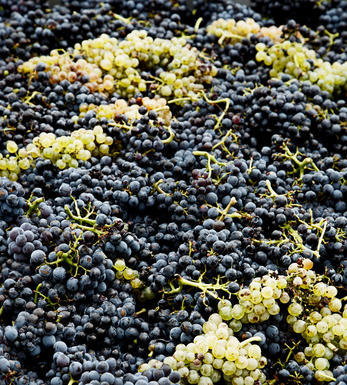
Mavrotragano
The Mavrotragano red wine grape is native to the island of Santorini. It produces small, thick skinned grapes of saturated red to black colour, on very low yields and it matures quickly by the end of August. The wines are redolent of red currants, spices, with opulent fruit, overlaid with mineral notes, and wrapped in, finely-grained tannins, reminiscent of the style of a Nebbiolo grape.
When the phylloxera devastated European vineyards in the late 1800s, the vineyards of Santorini were left unscathed; the sandy, volcanic soil of the island offered natural protection, and Santorini's Mavrotragano vines remain ungrafted in their natural rootstock. Nevertheless, plantings of Santorini's Mavrotragano have shrunk considerably.
Traditionally, it was used in the production of sweet wines but since the early 1970’s most of the plantings had been replaced by Assyrtiko, which guaranteed more lucrative options for growers.
Haridimos Hatzidakis was the first to experiment with Mavrotragano grapes for making dry wine in 1985 while working at the Boutaris Santorini estate. After setting up his own winery, he bottled Mavrotragano from the 1997 vintage. At the same time, in 1998, Paris Sigalas was also working on the same concept and produced a dry version of Mavrotragano, that garnered critical acclaim. The efforts of the two winemakers resurrected this great but almost extinct grape variety.
Mavrotragano is harvested entirely by hand. The wine is fermented for nine days and subsequently stored in oak barrels for at least one year.


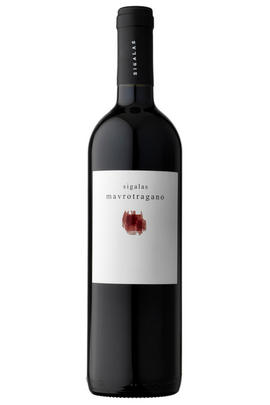
Buying options
Add to wishlist
Description
This celebrated example of Santorini’s rare but characterful Mavrotragano grape embodies a wine harvested from very low yields (18-25 hl/ha), on old trellised vines (mostly 60 years), in a near lunar landscape! The result is a big, bold wine but one possessing excellent poise and freshness. The deep crimson hue gives way to ripe, red-berried fruit, notes of fig, orange peel and spice. The tannins, though ripe, are mouth-filling and, in combination with notable extract on the palate, provide a dense mouth feel. High octane stuff, but an excellent accompaniment to roasted meat, richly-flavoured dishes and mild cheeses.
Demetri Walters MW, Hellenic Wines Specialist
Mavrotragano is a native of Santorini, where historically it contributed to blends for sweet wines. Dry single varietal wines were pioneered by Sigalas, and demonstrate the grapes nobility, yes it is full-bodied and fairly alcoholic, as you would expect for a grape variety prized for its sweet wines, but it has more than enough crunchy red fruit, fresh acidity and firm tannic structure to balance that alcohol. The palate has in addition notes of spice and autumnal undergrowth that add real interest and complexity. This variety is now one of the most prized in the local market, we are delighted to be able to offer this excellent example to a wider audience.
Martin Hudson MW, Wine Buyer
wine at a glance
Delivery and quality guarantee